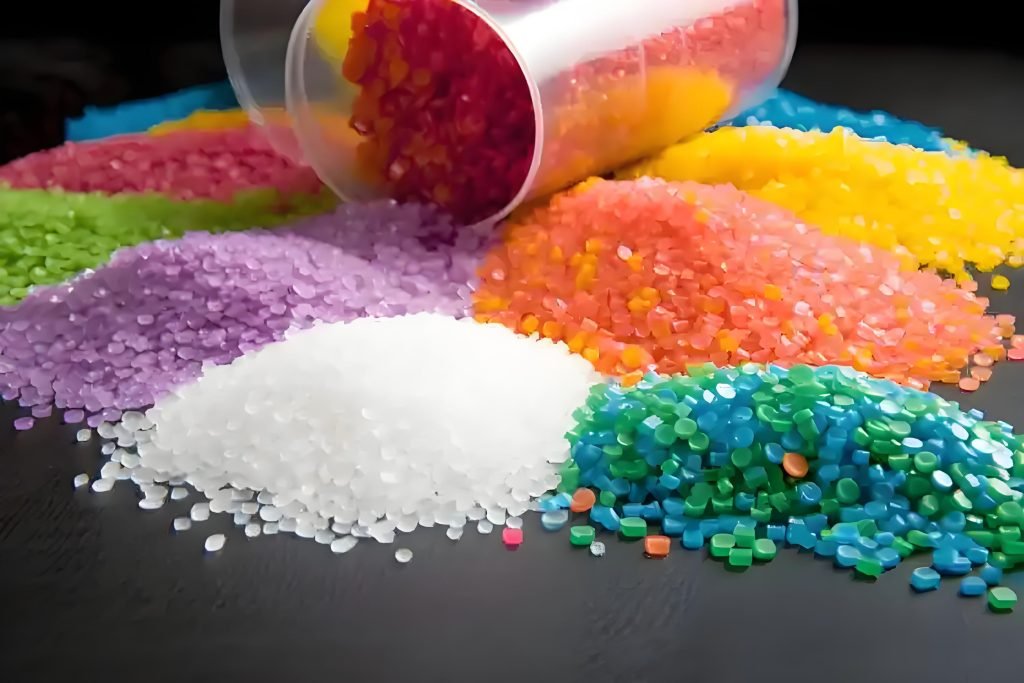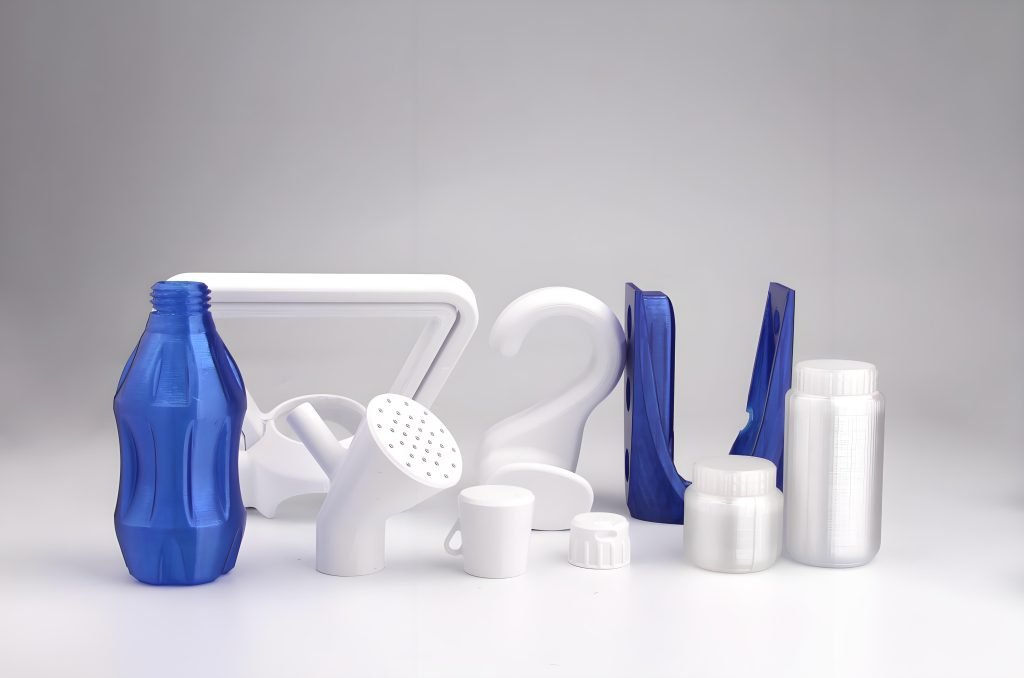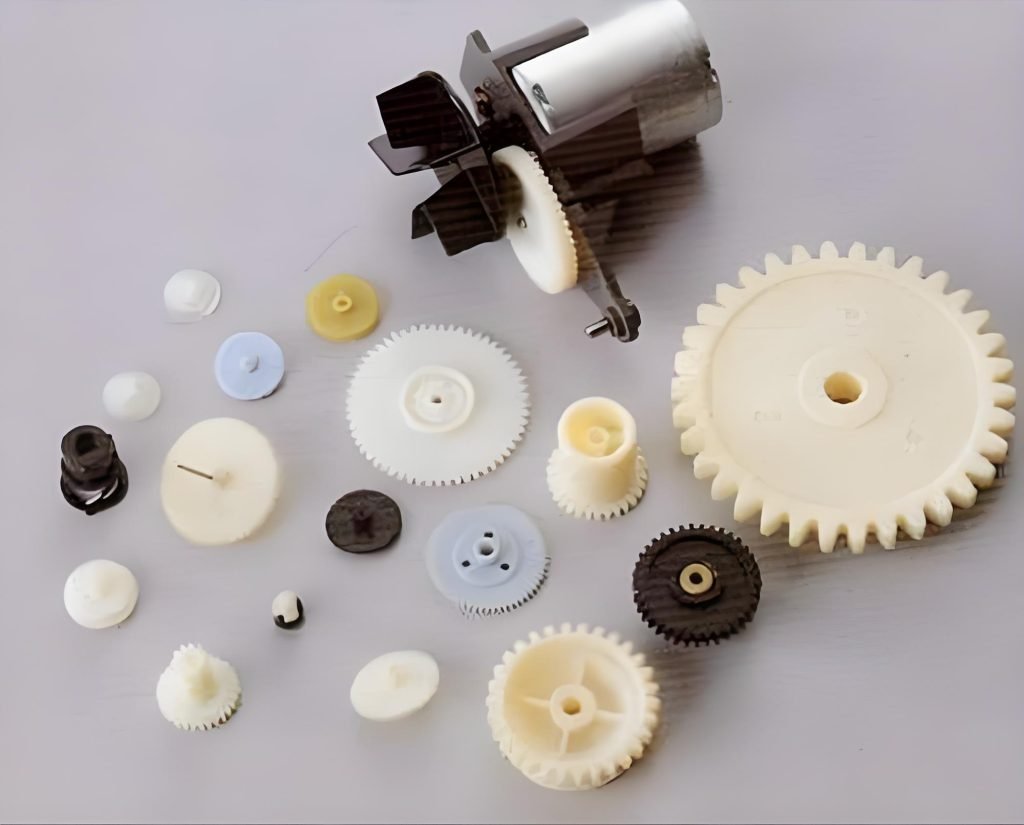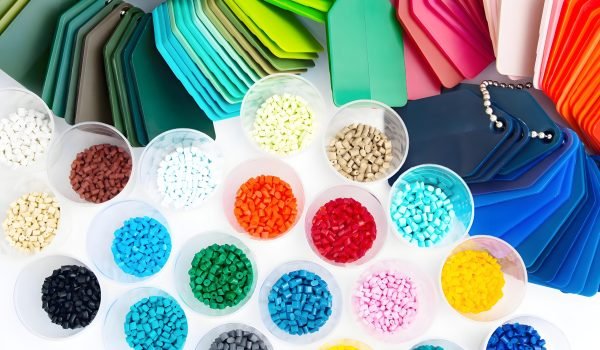Plastics are ubiquitous – from the case on your phone to your car’s dashboard or the bottle you’re currently holding. This terrific material has transformed our world and is utilized in almost every industry. But how does raw plastic become these everyday items? That’s the magic of plastic manufacturing.
This guide will walk you through the entire process step by step. You’ll learn about the different types of plastic and the main manufacturing methods used to create parts. From a single prototype to millions of products, we’ll show you how things are made.
Types of Plastic for Manufacturing

Before selecting a plastic manufacturing process, you must pick the correct material. Here’s a quick guide for you to understand the types of plastic for plastic processing.
The Basics: Resin Types and Material Forms
There are different forms a plastic material can take, depending on the plastic machining process. Knowing these forms is the first step in determining the best custom plastic forming method.
- Pellets/Resins: Primarily used as a raw material in granular form for injection molding and extrusion processes.
- Powders: Used in processes like Selective Laser Sintering (SLS) 3D printing.
- Liquid Resins: Liquid thermoset materials used for stereolithography (SLA) 3D printing.
- Sheets/Plates/Rods: Solid forms used for CNC plastic machining and vacuum plastic sheet forming processes.
But the form of the material is only part of the picture. To choose the right plastic, the fundamental behavior of the material under heat must be understood.
The Core Distinction: Thermoplastics vs. Thermosets
This is the fundamental classification of plastics, most importantly recognized by how they behave upon heating. This difference dictates which methods of manufacturing can be employed and also determines the final parts’ properties.
Thermoplastics: The Versatile Workhorses
Thermoplastics are plastics capable of being melted and reshaped repeatedly – you can melt a plastic forming bottle and reshape it into something new, making them the preferred choice for recycling. They melt and become soft and pliable when heated, and then become hard again when cooled. These properties make them so prevalent in modern manufacturing.
Some common examples include Acrylic (PMMA) for windows and signs, and ABS used to make LEGO bricks. You might hear about Polyethylene (PE) and Polypropylene (PP) used in bags and food containers, or Polycarbonate (PC) for eyeglass lenses and riot shields.
Thermosets: The Permanent Solution
Thermoset plastics set permanently after being heated and cured. Once molded and cooled, they cannot be melted again or reshaped. It’s like a cake you bake – there is no going back. This property makes them very durable and resistant to heat and chemicals, and gives them a really tough use.
Thermosets can be found when needing to withstand extreme conditions. Some examples include the Epoxy that is used for strong adhesives and coatings. Polyesters can be found in boat hulls, and Polyurethanes can be found in insulation foams. Vulcanized rubber is another thermoset used for tires and other durable products.
Common Plastic Materials
The table below identifies some common resin types of materials and their features and applications. This table can help you make an initial selection during your planning phase for your design project.
| Resin Type | Key Characteristics | Common Applications |
| ABS | Tough, rigid, good impact resistance, easily molded | Automotive parts, toys (e.g., LEGO), and electronic housings |
| PC | High-strength, transparent, heat-resistant | Bulletproof glass, eyewear lenses, and electronic components |
| PP | Lightweight, chemical-resistant, fatigue-resistant | Food containers, automotive parts, medical devices |
| HDPE | Strong, moisture-resistant, easy to process | Bottles, piping, cutting boards, grocery bags |
| PA (Nylon) | Strong, wear-resistant, self-lubricating | Gears, bearings, electrical connectors, textiles |
| POM (Acetal) | Stiff, low friction, dimensionally stable | Precision parts, gears, fasteners, automotive systems |
| PMMA (Acrylic) | Transparent, weather-resistant, brittle | Windows, signs, displays, lenses |
| PET | Strong, stiff, good moisture barrier | Drink bottles, food containers, clothing fibers |
| PS | Rigid, brittle, low cost, easy to make | Cutlery, CD cases, packaging foam, models |
| PC/ABS | Heat resistant, strong, good processability | Automotive interiors, phone cases, computer parts |
Main Types of Plastic Manufacturing Processes
After you finalize the choice on your plastic, it will then be time to choose a manufacturing process. So, what is the manufacturing process of plastic? There are actually different ways to turn your plastic into a finished product. Each manufacturing process will have its strengths depending on your type of project, whether it be a prototype or a million parts.
3D Printing
3D printing, also called Additive Manufacturing, builds parts slowly, one layer at a time, from a digital design. Unlike traditional means with subtractive processes, this additive approach benefits from using only the material needed. It can create complex and intricate designs.

Popular technologies include Fused Deposition Modeling (FDM) using a plastic filament, and Stereolithography (SLA) to solidify a liquid resin with lasers. It is ideal to do rapid prototyping and produce custom parts for aerospace, medical, or automotive requirements in low volume.
CNC Machining
CNC machining is a subtractive process, using computer-controlled tools to remove material from a solid block of plastic. It is referred to as a sculpting method to achieve the high accuracy and precision tolerances necessary for mechanical components to fit together.
It is common in industries including aerospace, medical, and automotive, where quality and exactness are a requirement. CNC custom plastic machining is a great way to prototype and make small runs of parts accurately, with a superior finish.
Injection Molding
Injection molding is the most prevalent process in mass production. This method melts plastic pellets and injects the molten plastic at high pressure into a steel mold. After cooling, the finished part will be ejected. This plastic molding process is incredibly quick and cost-effective.
The biggest advantage is efficiency in high-volume production. After the initial mold is produced, the cost per part drastically decreases, making it the most cost-effective solution for producing, in most cases, millions of the same part – car dashboards, phone cases, or toys, for example.
Extrusion
The process of extrusion is for continuous shapes with a uniform cross-section. It works by forcing heated molten plastic through a die, which is a metal plate with a hole defined. Once the plastic cools into a solid, it takes on the new shape.
It is the most suitable process for producing long and continuous parts such as pipes, tubes, and window frames. It is an effective means of producing these product lines in high quantities in the construction and infrastructure industry.
Blow Molding
Blow molding is all about making hollow plastic parts. A heated plastic tube referred to as a “parison” is placed into a mold. Air is blown into the parison, inflating the plastic until it presses against the walls of the mold and takes its specified shape.
This method is very effective for producing hollow parts in large volumes. Blow-molded parts are everywhere. Think of plastic bottles for beverages or automotive parts such as fuel tanks or ducts. It is a very fast and cost-effective way to create hollow products.
Rotational Molding
Rotational molding, or roto-molding, is another excellent way to create large hollow parts. The process involves placing powdered plastic resin in a hollow mold and heating it while rotating slowly. The powder melts and sticks to the inside walls, forming a part that has a uniform thickness.
This process is terrific for producing large, seamless hollow parts with consistent wall thickness. While not as quick as blow molding, it is ideal for projects like storage tanks, kayaks, and playground equipment, especially for smaller production runs of large products.
Vacuum Forming
Vacuum forming is a simple and cost-effective process. A flat sheet of plastic is heated to the point that it is soft and pliable. A vacuum is a means of sucking the air out from between the plastic and the mold, pulling the soft plastic tight against the mold surface, creating the shape you want.
This is typically suitable for parts with relatively simple shapes. This is a great process for low volumes and prototypes. Vacuum-formed parts are commonly seen in product packaging, for example, a clear blister pack, as well as automobile interiors and signs.
Polymer Casting
Polymer casting is the process of pouring a liquid plastic resin into a mold and allowing it to cure and solidify at room temperature or with a little heat. This process is really good for parts that may have a high level of detailed features, where there is no need for high pressure or heat.
Since it uses liquid resin, polymer casting is a great tool for producing complex and detailed parts, for prototyping, and short run production. It can be found in dental applications, model making, jewelry, and detailed artwork.
Comparison of Common Manufacturing Processes
| Process | How It Works | Best For | Common Products |
| 3D Printing | Builds parts layer by layer. | Rapid prototyping and complex shapes. | Custom parts, medical models, prototypes. |
| CNC Machining | Cuts parts from a solid block. | High-precision parts and small batches. | Aerospace parts, medical devices. |
| Injection Molding | Molds liquid plastic under high pressure. | Mass production of identical parts. | Phone cases, toys, automotive parts. |
| Extrusion | Pushes plastic through a die to form a continuous shape. | Long, uniform parts like pipes and tubes. | Hoses, window frames, pipes. |
| Blow Molding | Inflates plastic inside a mold. | Hollow parts like bottles and containers. | Bottles, tanks, containers. |
| Rotational Molding | Heats and rotates powder in a mold. | Large, seamless hollow parts. | Kayaks, storage tanks, playground equipment. |
| Vacuum Forming | Heats and pulls a plastic sheet over a mold. | Simple shapes and low-volume projects. | Packaging, signs, automotive interiors. |
| Polymer Casting | Pours liquid resin into a mold. | Parts with fine details and short runs. | Jewelry, dental models, art pieces. |
Tips to Find a Reliable Plastic Part Manufacturer
Identifying the right plastic manufacturing process is just one step; the next is to find a manufacturer to fulfill your project. A reliable partner is key to success. Here are some basics to help you find the right partner for you.
Material Availability and Expertise
First, make sure your manufacturer can run the plastic you have selected. A quality partner is going to have a variety of materials, understand plastic materials, and how they work. They should be able to provide ideas for what material will be the best fit for your project based on strength, flexibility, and cost. If they have limited options, they are probably not going to be a quality fit.
Manufacturing Capability and Capacity
When finding a manufacturer, make sure they have the right technology and equipment to support your process selection. That could be injection molding or 3D printing. Also, consider their production capacity. Can they produce the requested quantity of parts, from a few prototypes to millions of parts? Be sure they can meet your project requirements.
Quality Control and Reliability
Quality is everything. You need a manufacturer that has quality first in its mind. Look for your manufacturer’s quality control measures, including material testing, defect checks, and consistent products. A reputable manufacturer will be open and honest about their process for producing quality custom-machined plastic parts.
Lead Time and Cost
Finally, consider cost and lead time. Get multiple quotes and compare costs, but watch out for really very low-cost quotes. Ensure that the manufacturer you select can hit your production timeline. It can get expensive when production is delayed, and having a partner that can deliver on time is critical. You need to find a manufacturer that can achieve competitive costs while having a commitment to quality.
Why Choose Fecision for Your Plastic Parts?

Choose Fecision as your custom plastic molding manufacturer for precise, high-quality components at competitive prices. We have a wide range of available materials, such as ABS, PEEK, and PP, backed up with thorough technical expertise to suggest the best solution. Our manufacturing capabilities cover prototyping and large production runs with tolerances as tight as ±0.0005″ to ensure consistent quality.
We take the reliability of our manufacturing seriously and have quality control processes and inspection equipment in place. With fast turnaround times, we are able to be productive and flexible in production with cost-efficiency, regardless of whether your projects are small or large-scale. Our engineering team also provides DFM support to enhance your designs for manufacturability and performance.
Summary
Plastic manufacturing is fascinating. From thermoplastics to thermosets, and from injection molding to 3D printing, there is a suitable process and material for your specific project. Finding a reliable manufacturer with the right expertise, capacity, and commitment to quality is the final and most important step.
Partner with Fecision for seamless manufacturing, and allow us to guide you from conceptualization to implementation, while combining our advanced technology and expertise to provide you with the best possible outcome. You will get:
- Full-service: Prototype to Mass Production
- Precision: Tolerances to ±0.0005″
- Materials: Engineering-Grade Plastics
- Scalable: Low to High Volumes




